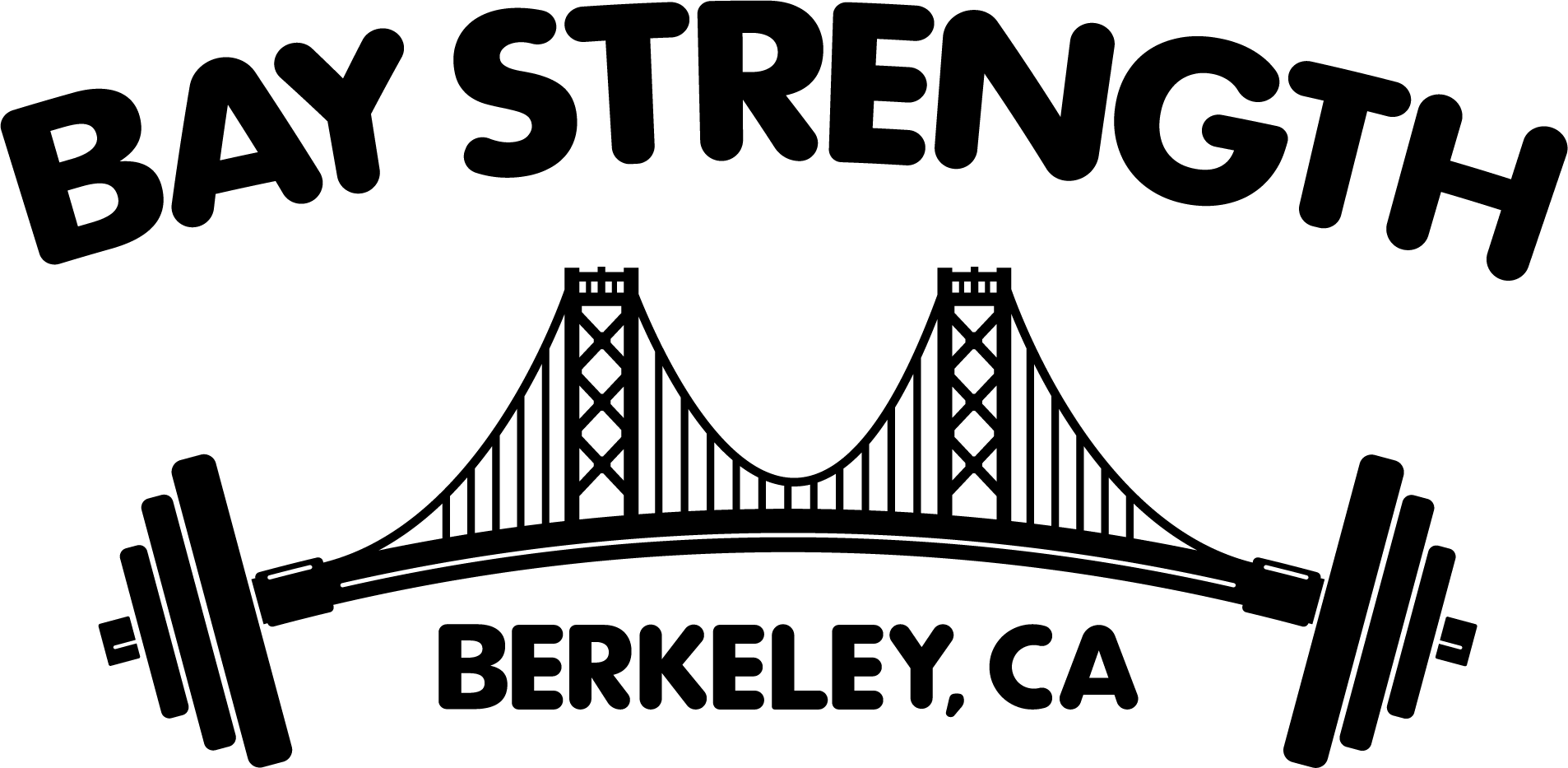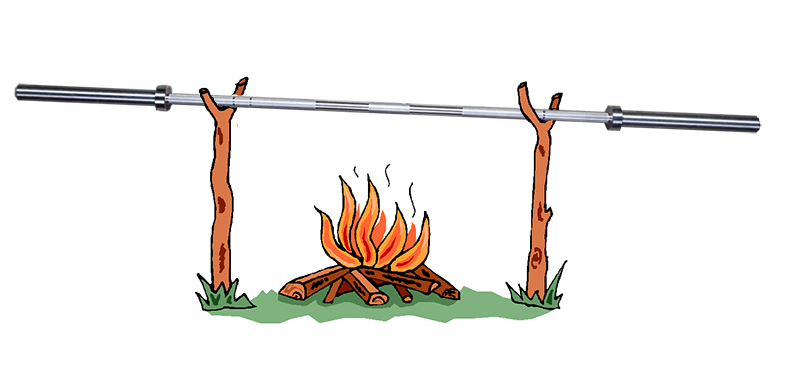Warmup sets are an important part of your training routine. Properly executed, warmup sets effectively prepare you to perform your heavy work sets to the best of your ability.
For new lifters in particular, how to approach one’s warmup sets — how many of them to perform, and at what weight — can be a subject of confusion. This guide will give you some guiding principles and a couple specific methods to approach your warmup sets.
Guiding principles
Before getting into the specifics, let’s briefly review the purpose of warmup sets. Your warmup should accomplish a few things.
First, it should elevate the local tissue temperature of the muscles and joints you’ll be working. For most lifters, simply doing warmup sets with increasing weight on the bar is adequate to accomplish this task — although some lifters, especially older lifters and lifters who live in colder climates, may benefit from a 5-10 minute systemic warmup on a rower before getting under the bar.
Second, warmup sets afford you the opportunity to tighten up the movement pattern of whatever lift you are performing before you get to your work weight. Don’t just go through the motions of doing your warmup. Know what technique issue you want to focus on that day in a given lift, and work on that starting with your very first warmup. If you are trying to work on not coming up on your toes in your squat, focus on staying on your mid-foot even with the empty bar warmup sets.
It’s also important to say what your warmup sets should not do: they should not tire you out for your work sets! You need to do enough warmup sets that you are actually warm and ready for your work sets, but overdoing your warmups will drain you of energy that you need for the heavy work that provides the stimulus to drive adaptation.
Warmup sets: how many?
How many warmup sets should you perform?
For most novice lifters, 2 sets of 5 with the empty bar and then 3 additional warmup sets with increasing weight on the bar provide an adequate warmup. Experience has shown that this number of sets provides an adequate warmup for the lifter and gives them ample practice with the lift before they get to their work weight of the day.
At the very beginning of a lifter’s linear progression, I will often have them do a set of 5 for every warmup set except for the last one, where I have them do a set of 2. Because their work weight is not actually very heavy for them yet, more sets of 5 during warmups do not tend to tire them out for their work weight, and the extra reps give them more practice and more chances for me to cue and correct technical errors.
As the lifter gets stronger and their work weights become more challenging, typically 2-3 weeks into their linear progression, I will have them start tapering down the number of repetitions they perform in their warmup sets. So, I’ll have them perform the two empty bar sets, then additional sets of 5, 3, and 2 reps. It will look something like this:
| Empty Bar | Warmup 1 | Warmup 2 | Warmup 3 | Work Sets | |
| Sets | 2 | 1 | 1 | 1 | 3 |
| Reps | 5 | 5 | 3 | 2 | 5 |
Calculating jumps in weight, method 1: even jumps
How do you calculate the jumps in weight you should make?
One method, and the one I generally employ for lifters who have not yet reached advanced novice stage, is to simply make even jumps in weight. The easy way to calculate this is to take your work weight of the day, subtract the bar (45 lbs), and then divide the difference by 4, since you will make 4 total jumps in weight.
For example: suppose the lifter’s squat work weight for the day is 165 lbs. 165 minus 45 is 120 lbs. 120 divided by 4 is 30 lbs. So, the lifter will make 30 lbs jumps, and their warmup will look like this:
| Empty Bar | Warmup 1 | Warmup 2 | Warmup 3 | Work Sets | |
| Weight | 45 | 75 | 105 | 135 | 165 |
| Sets | 2 | 1 | 1 | 1 | 3 |
| Reps | 5 | 5 | 3 | 2 | 5 |
Note that it is not necessary to be one hundred percent exact in your warmup jumps. If a lifter’s work weight on the squat is 225 lbs, it is not necessary to make 45 lbs jumps. Simply alternating 50 and 40 lbs jumps is perfectly fine, and easier to load. In this case, the lifter’s warmups would look like this:
| Empty Bar | Warmup 1 | Warmup 2 | Warmup 3 | Work Sets | |
| Weight | 45 | 95 | 135 | 185 | 225 |
| Sets | 2 | 1 | 1 | 1 | 3 |
| Reps | 5 | 5 | 3 | 2 | 5 |
Calculating jumps in weight, method 2: 45% / 65% / 85%
An alternate method to determine the increments in weight between warmup sets is to do your three warmup sets with weight on the bar with 45%, 65%, and 85% of your work weight on the bar.
Personally, I find this method more appropriate for lifters who have reached or passed the advanced novice stage of their training. A lifter who can squat 315 lbs has no need to do a warmup set with just 115 lbs on the bar — which is what the even jump method would call for. Instead, they are better off making some bigger jumps in weight during their early warmup sets, to get used to the heavier weight on the bar, and then making smaller jumps in weight up to their final working weight.
Taking as an example a lifter squatting 315 lbs, their warmup sets would look like this:
| Empty Bar | Warmup 1 | Warmup 2 | Warmup 3 | Work Sets | |
| Weight | 45 | 140 | 205 | 270 | 315 |
| Sets | 2 | 1 | 1 | 1 | 3 |
| Reps | 5 | 5 | 3 | 2 | 5 |
Note that in this example I have rounded to the nearest 5 lbs. It is not necessary to be 100% precise with the percentages.
Modifications and other details
The above two methods represent easy ways to figure out how to approach your warmup sets. There are a few other considerations to take into account in your warmup.
The first is that as your training progresses and your work sets become heavier, you may decide that you want to perform one additional warmup, a single, within 5 to 10% of your final work weight. This is not always necessary, and often comes down to the individual. Some lifters find that doing a single rep closer to their work weight better prepares them for the first heavy set, while others do not need it. If you find that you have a hard time moving from your last warmup set to your first work set, give this approach a shot.
Similarly, as your work weights get heavier, you may add in an entire additional warmup set so that you are not making jumps of over 100 lbs between sets. For example, a lifter pulling 545 for a set of 5 on their deadlift might do the following:
| Warmup 1 | Warmup 2 | Warmup 3 | Warmup 4 | Warmup 5 | Work Set | |
| Weight | 135 | 225 | 315 | 405 | 495 | 545 |
| Sets | 2 | 1 | 1 | 1 | 1 | 1 |
| Reps | 5 | 3 | 2 | 1 | 1 | 5 |
Note that in the above example, since the lifter is deadlifting, there is no empty bar set — the bar starts loaded with 45’s for 135 lbs total.
Another consideration to be mindful of is the time you spend on your warmup sets. Lifting heavy weights requires a lot of rest time between the work sets – a minimum of 5 minutes after the first few weeks of training, and sometimes as long as 10 minutes. This tends to make workouts take the better part of two hours, especially once a lifter progresses to high volume workouts within intermediate programming.
Consequently, you should strive to make your warmup sets as efficient as possible. You probably don’t need to rest more than a minute or two between them — maybe you only need to rest as long as it takes to load the bar. Those of us living the glamorous life of strength coaches spend most of our day in the gym and can sometimes afford to take our time through warmups, but most people reading this will not have that luxury. Get your warmup sets done efficiently so that you can take all the rest time you need to complete your work sets.
There are a couple tricks that you can use to get your warmups done efficiently. First, consider combining the two empty bar sets into a single set of 10. A reasonably proficient lifter can easily save a little time this way, although I would not advise this for lifters in their first month of training, or for lifters whose work weights are not much heavier than the bar, as is the case for many novices’ press and bench press during the early period of training.
Second, for those of you fortunate enough to be working out at home or in a commercial gym when it is mostly empty, you can consider doing your warmup for your next lift between your last two work sets of your current lift. So, if you have just finished squatting and your next lift is the press, you can do your warmups for the press between work sets 2 and 3 of your squats.


Jeremy,
Thanks for this article. I really enjoyed learning about the different methods of warming up. Also the tip that each increment doesn’t have to be ‘exact’ was a revelation. Useful information throughout the entire article!
Cracking article. Doing low rep incremental warmup sets is the way. Since I started 5/5/3/2 warmups my strength has sky rocketed and no burn out. Nice one.
Great article, very informative. I hadn’t been warming up at all (!) but as of today have changed my ways based on this advice. As an older lifter I do worry a bit about injury so the common sense approach you’ve outlined is reassuring.
How do i warmup up for weghted dips aand chin ups?
Great article, you answered all of my questions!
Thanks for the article.
Love the simple, clear warmup set planning, including the 5>3>2 reps.
This is gold, thank you very much, I hit the motherlode with this article and Starting Strength manual. I’ve been starting out too heavy on my warm up sets. Great gouge!